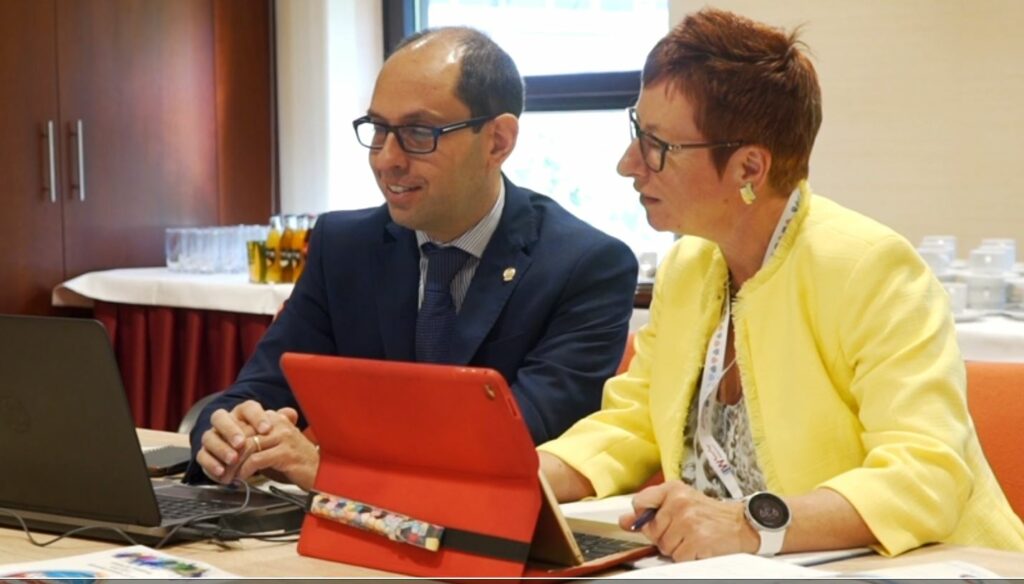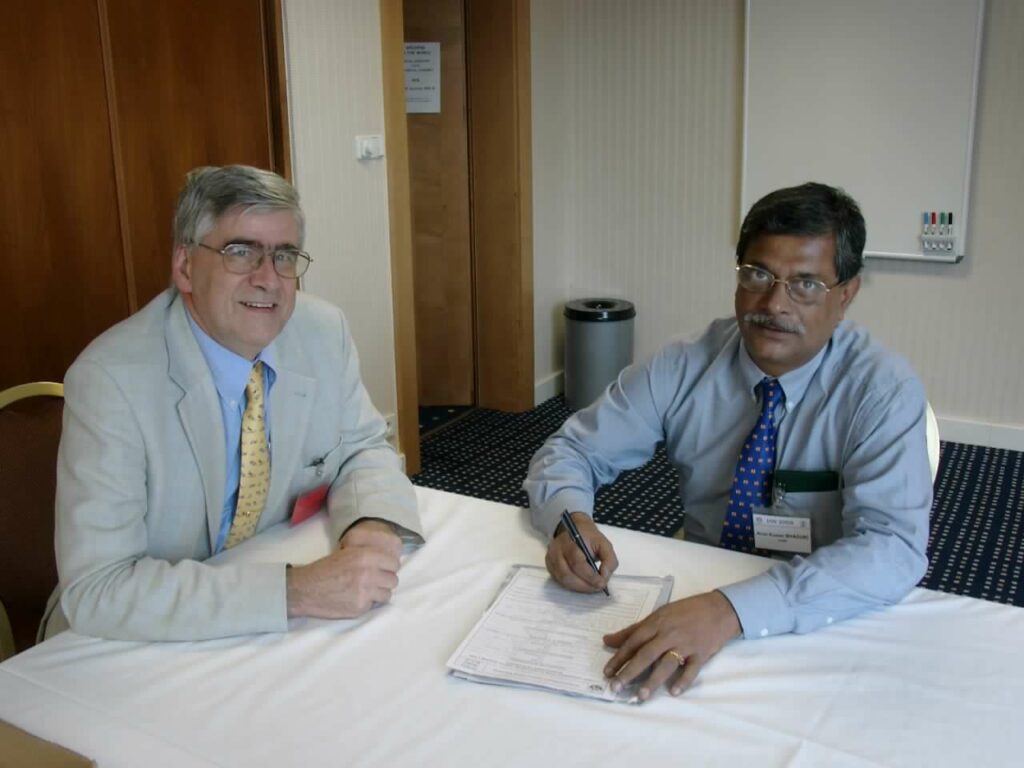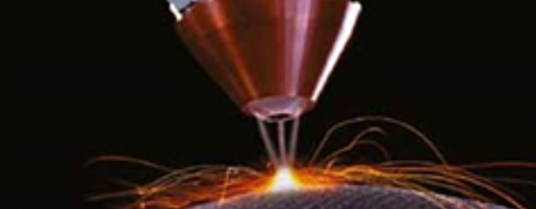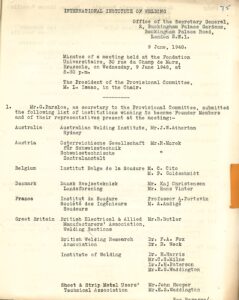IIW supports the development of welding, joining and allied processes since 1948.
Initially focused on metals, IIW now covers welding and joining of all materials.
Discover IIW History
During the 76th Annual Assembly, IIW Announces a new visual identity, with a new logo, tagline and a brand new set of communication tools.
The logo keeps its liaison with the past and clearly identifies its relation with the people in the entire world and its history with welding to promote the development of a safer and sustainable world.
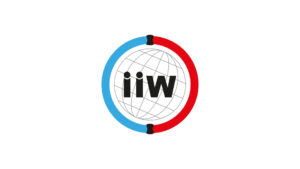
At the 76th IIW General Assembly IIW approves a new vision, mission and strategic plan.
The Mission of IIW is The leading global welding community linking industry, research and education. The vision is Advance welding and joining through a worldwide network.
Vision and mission come with the acclamation of IIW core values, and a set of projects and objectives.
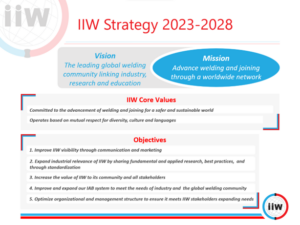
Having duly considered the restrictions associated with the COVID-19 Pandemic, IIW decided to cancel the Annual Assembly and International Conference initially planned in SIngapore in 2020 and to run the first on-line IIW Annual Assembly. In 2021, restrictions to international travel required the cancellation of the event in Genoa and brought to the second online Annual Assembly.
IIW well succeeded in managing its technical and scientific activities through a virtual working environment which allowed all the groups to meet, discuss, recommend and develop deliverables as usual. In 2021, IIW was also able to hold the International Conference as usual and run virtual social events.
In 2022, the event was held in Tokyo in a Hybrid form, as Japan still was not fully open to any international traveller. Thanks to the great efforts of the organisers, the Japanese Welding Engineering Society (JWES), the event was run smoothly with great interaction between live and on-line participants.
DOCUMENTS
Upon decision taken at the extraordinary Assembly held on 7 July 2019 in Bratislava, the host country of the Secretariat and thus the organisation itself is moved from France to Italy.
Dr Luca COSTA is appointed as the new IIW CEO, and the address of the organisation is now Lungobisagno Istria 15, 16141 Genoa (Italy).
The services for the IIW General Secretariat will be delivered by Istituto Italiano della Saldatura, the Italian Institute of Welding (IIS Group), a founder member of the IIW.
During the 71st General Assembly, IIW Members approved the new Mission and Vision serving a new 5-year Strategic Plan.
During the 70th IIW Annual Assembly in Shanghai, P.R. China, a new book on the history of the organisation was shared with the community. More than 40 contributors participated in the preparation of this outstanding book covering the period from 1990 to 2015.
By the end of 2015, IIW membership reached a record high of 59 Member Countries and approx. 125,000 IAB diplomas were awarded since 2000. Nearly 1,700 companies worldwide, including 278 new ones, were certified by 26 ANBCCs in 2015.
The change from in-house to professional publication, through the partnership with Springer, resulted in the exposure and the growing influence of the “Welding in World” journal within the scientific community.
Resolutely turned towards the future, IIW intended to highlight the next generation of leaders and scientists throughout the first Young Professionals Evening, followed by the first Young Professional International Conference (YPIC) held in Hungary.
Launching of the Fellow of IIW (FIIW) award, which celebrate lifetime achievement through distinguished contributions to the field of welding science and technology, and for promoting and sustaining the professional stature of the field. The first awards were presented in 2015.
Working Group Regional Activities (WG-RA) introduced a new project entitled “Establishing a National Welding Capability (NWC)” as part of its WeldCare programme developed in 1996.
The IIW White Paper published with the financial support of several Member Societies and prepared by IIW experts from around the world was a means of stimulating interest in the development of a shared vision of a sustainable and desirable future.
Looking forward to see you all soon!
DOCUMENTS
A historic year for the International Authorization Board (IAB), during which over 10 000 diplomas were issued for the very first time.
IIW has improved the service provided to the membership through the launch of a set of modern online services. The new website became available on 2010.
To encourage young people’s participation in IIW, a special registration category for events was created with the support of DVS, the German Member Society.
Contractual Joint Secretariat agreement signed between IIW, ISQ and EWF, on one hand, and licensing agreement signed between IIW and EWF, on the other hand.
IIW’s membership always reflected the world’s political changes: in the 90’s, when several countries broke up into distinct countries, e.g. Yugoslavia and Czechoslovakia, members were added to or re-joined IIW. In the early 2000’s new members, e.g. Nigeria, Morocco, South Korea, made IIW truly representative of the world at large. The Arab Spring led some countries, e.g. Tunisia and Libya, to suspend their membership.
Task Group Governance (TG-Gov) appointed to investigate the present governance situation of IIW and make adjustments or changes where appropriate.
The key points of this business plan were: “Drafting of best practices for sustainable development; Development/implementation of ETQ&C programmes on a global basis; Promotion of IIW in all regions of the world; Implementation of IIW’s outcomes; Provision of quality services to IIW Member Societies and other organizations.”
IIW signed a Memorandum of Understanding (MoU) with WorldSkills International, whose competitions at all levels provide a means for young vocational welding trainees to display their skills and improve the image of welding as a career.
IIW organized the first IIW International Congress in India (Mumbai), a devoted and active member to the cause of promotion and advancement of welding science and technology.
Release of IIW Statement on Manganese summarizing evidence from scientific literature and making recommendations for the control of exposure and future research.
The National Welding Societies of Bulgaria, Romania and Serbia & Montenegro established the South-East European Network (SEENet) for welding technology transfer in the region.
Title of the “Technical Committee” created in 1990 changed to “Technical Management Board”, that gave it more visibility and authority with responsibility for the general policy and objectives of all IIW’s scientific and technical activities and their role in producing standards.
ISO accepted the principle of “cohabitation” that allows two paths for a standard in the case where two somewhat different systems of national/regional standards have evolved in the world market, e.g. for welding consumables.
The incoming CEO Daniel Beaufils improved the Secretariat’s operation, on many levels: new software, upgrading of the technical database, improved and user-friendly version of the website, changes to the Secretariat staff.
The first country outside of Europe to have its IIW Authorised National Body (ANB) approved was China, then Japan, Australia and the USA. By the end of 2004, over 24 000 IIW diplomas had been issued and the IIW International Authorization Board (IAB) network consisted of 34 active ANBs.
Setting up the IIW International Authorization Board (IAB) and global ETQ&C scheme gathered pace. Mrs Rute Ferraz became in particular the Chief Executive Officer (CEO) of the IAB.
Launching of the first website before a newly revamped version in 2001 that aimed to create a user-friendly browsing experience. By 2003, IIW also refined the content for an enhanced user experience in storing and distributing Working Unit documents.
Italy and the UK became the first countries to have an authorized National Body for Company Certification (ANBCC) through EWF.
Elsevier, who had bought out Pergamon Press in 1992, ceased publication of Welding in the World. This has led IIW to resume in-house publication until 2012, when a partnership was created with Springer.
A new IIW Constitution was approved at the San Francisco Annual Assembly and whose main changes were: “the Executive Council renamed Board of Directors, Governing Council renamed General Assembly, and a limit set on the Chairs’ terms of office.”
The concept of a single secretariat had been considered since the early 90’s. After years of numerous heated debates and interactions, at the Stockholm Annual Assembly, Institut de Soudure (France) was finally awarded the merged Secretariat role.
IIW, bilingual (French/English) since its foundation, adopted English as its only official language towards the goal of speaking with one voice.
The Governing Council unanimously approved a resolution to go ahead with an IIW global education, training, qualification and certification (ETQ&C) scheme.
New Executive Council WG “Regional Activities and Liaison with Developing Countries” (WG-RA) formed.
EWF, formerly known as ECCW, extended a partnership arrangement for the recognition of welding qualifications to all countries in the European Union as well as to some Eastern European countries.
Following the signing of the Vienna agreement, ISO, CEN and IIW concluded a tripartite agreement.
Cooperation agreement signed with Woodhead Publishing for re-design and e-publishing of IIW books.
In March Dr Eaton reported the provisional findings of the first strategic planning group to the Executive Council. At the subsequent Montreal Annual Assembly, he mentioned that IIW faced new challenges and opportunities in a time of rapid change, thus introducing a new vision for IIW – Towards 2000.
Introduction of a computerised database as the first step towards electronic document management.
Since the distance from certain regions precluded their greater involvement in IIW activities, e.g. attending Annual Assemblies, it was proposed to hold regional congresses. The first IIW Regional Congress was held in Hobart, Australia.
In 1985 IIW applied to ISO to become an international standardizing body. By ISO resolution 24-1986, IIW was officially approved to develop standards in the field of welding and related processes.
To increase Welding in the World’s sales it was decided that Pergamon Press would take over publication of the journal.
In 1974, the European Council for Cooperation in Welding (ECCW) was founded to meet the wide interest and need prevailing in Europe for harmonising qualifications of welding professionals, such as welding engineers, technologists, specialists and welders.
The growing importance of new processes, termed special, e.g. electron beam, plasma and later laser welding, provoked the creation of Commission IV (C-IV) Special Welding Processes. C-IV changed name in 1985 to High Energy Density Welding and again in 2003 to Power Beam Processes.
Guy Parsloe, Secretary General, a strong advocate of the Institute’s involvement in documentation and terminology, was particularly interested in the dissemination of the IIW’s work . In 1962, the Institute’s journal Welding in the World was first published directly by the Institute. The journal was bilingual (French/English) with Parsloe as joint editor in chief and André Leroy, Scientific and Technical Secretary as publication coordinator.
Following WW II, many members of the welding community, including CPI members, actively sought to establish a truly international welding organisation. The stage was set for the official launch of the International Institute of Welding, which took place at a conference organised by the Belgian Institute of Welding, on 11 June 1948




